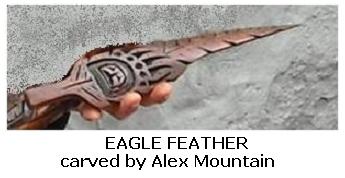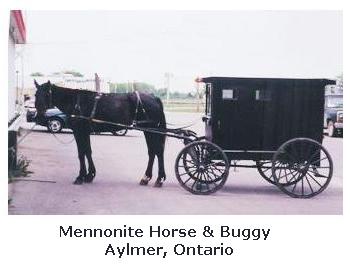RACCOONS
Cute Masked Bandit
or Wildlife Pest?
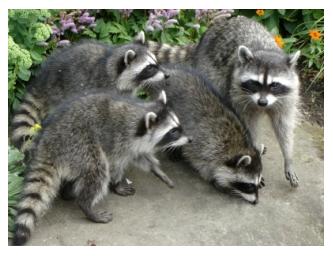
Raccoons are common in this part of Southern Ontario and we often see them during the early evening and at night when driving along both rural roads and city streets.
They are thriving both in the country and in urban areas, where they have made the adaptations to city life.
They have not, however, adapted to our busy roads and highways, where the death toll is high.
Each day many are killed on area roads when these nocturnal animals leave their dens at dusk to look for food.
They are easily identifiable by their narrow faces with their black "mask", white patches over their eyes and for their bushy, ringed, tails.
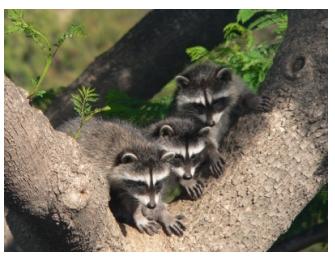
They are true omnivores and will eat almost anything, but their favourite food, in my opinion, is the contents of garbage cans when they are left outside ready for pick-up day!
This raccoon family was out at dusk looking for food in our garden, but they will eat fruits, vegetables, small birds, eggs and small mammals.
We bought a special "'Coon Proof" garbage pail, but they have managed to open it - we even secure the lid of our bin with a bungee cord, but they untie that too.
We have recently started to secure the lid of the garbage pail with a bungee cord and put the bins into a wire dog cage, which we lock. Would you believe it - those dexterous little critters can reach through the bars of the cage and open the lid of the bin!
They appear to spend their summer evenings rummaging through our refuse, snacking on any left-overs that they find, and generally making a mess in our back garden!
In the vegetable garden, they will bend the tops of corn stalks down, just to eat the tops of the ears of corn, and they also break open watermelons and scoop out the delicious fruit.
We have also lost several of our chickens to a hungry raccoon family, when our birds don't return to the hen house quickly enough when it starts to go dark in the evenings.
They may be cute, but they can be vicious and have very sharp teeth and claws.
Measuring about 1 metre including the tail, and weighing between 7 - 20 kg, these animals are large. Mothers usually have one litter of 4 - 6 kits each year.
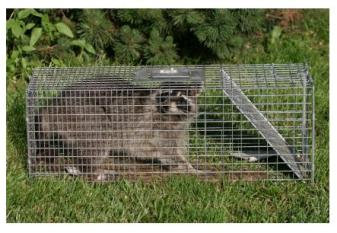
They are very adaptable and are found throughout Canada, the USA and into South America.
Their ability to adapt to different habitats, combined with their curiosity and intelligence, has allowed them to become town and city dwellers. This often brings them into conflict with humans as they seek food and shelter.
Sadly, they can also carry Rabies, which is a devastating disease with no cure, which can infect both animals and humans.
If you have pets in your home, such as cats and dogs, it is important to ensure that they are vaccinated against Rabies each year.
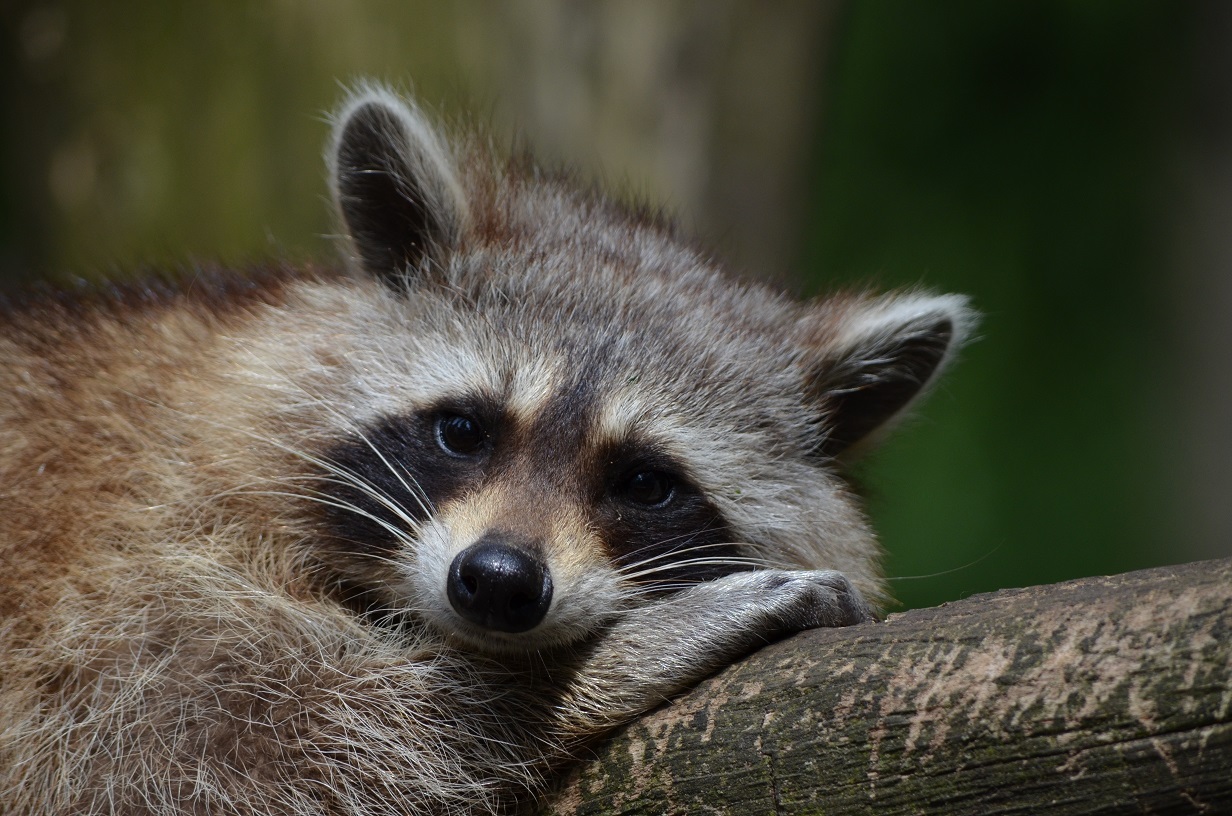
We should also remind all parents to teach their children to avoid Raccoons, especially those which are out during the day (which is uncharacteristic) and those which are behaving strangely, as this is often an indication that the animals are ill and are to be avoided.
Raccoon Info ...
Urban Wildlife - the Raccoon
Tips and techniques to humanely remove these critters (raton laveur)from your chimney, attic or from rummaging through your trash!
Return to top of Raccoons page




